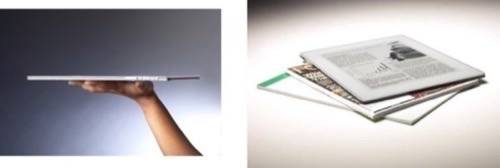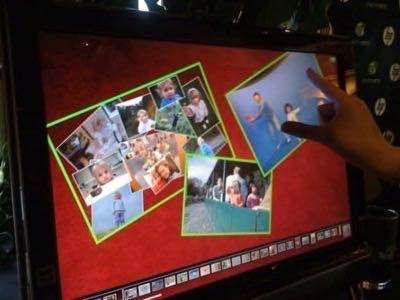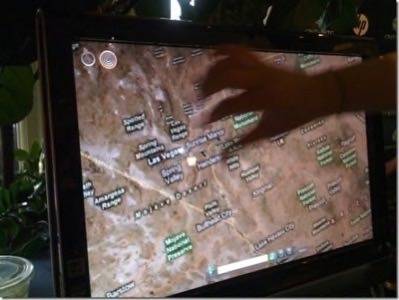It’s tempting to give Apple’s iPhone credit for the birth of touch-based computing, but it was not the first touchscreen user interface – nor is it the only one in existence today. Long before the iPhone, touchscreen LCDs were common, as were touch smartphones from Palm, Sony Ericsson, HTC, and others. In addition, back in 2001 – long before the iPhone launch – Microsoft began work on Microsoft Surface, a touchscreen tabletop computer. Yet it was the iPhone’s multi-touch capabilities along with its stellar design that really got the ball rolling for touch computing. The only question that remains now is what will come next?

Besides the Surface and the Kindle, we’ve recently encountered some other touch-based computing products that may one day revolutionize computing, too.
Plastic Logic’s Reader
The first product on our list is Plastic Logic’s upcoming e-book reader. A demonstration of this device at the past DEMO08 conference left many people amazed at how incredibly thin this potential “Kindle-killer” is. The company says they’ve perfected a way of printing polymer transistors onto flexible plastic displays. This particular revolution won’t be just a transition to lighter and “bendier” touchscreens, it will also lead to lower power consumption and longer battery life.

But perhaps what’s best about Plastic Logic’s technology is the cost. The polymer-based circuitry will be able to bring new products into market where silicon microchips were simply too expensive. Since the displays are flexible enough to be rolled up like paper, the potential for this new type of computing is nearly limitless. Is this the future of the newspaper? Perhaps, but it could also be used in smart electronic tags that track merchandise and large flat-panel displays.
Plastic Logic will begin their entry into the market in the second half of 2009 with pilots and trials with key partners and will prepare for further sales by 2010.
Pressure-Sensitive Computing: Impress
For an inventive, “out-there” product that could make the cold, stiff computer a thing of the past, look no further than this touch screen flexible display called “Impress” (PDF). Made of foam and force sensors, Impress works with both touch and the intensity of pressure. This computing technology lets the user squeeze out information or put objects in motion by deforming the surface of the computer.


The end result is pretty amazing, though it may not end up being as practical as the flexible polymer displays. However, it’s easy to imagine how it could be put to use in entertainment-based computing at the very least. (Or maybe huggable, touch-enabled teddy bears? We can only hope!)
The Touch OS: Windows 7
While its easy to see the usefulness of touchable handheld devices, others have questioned how exactly touchscreen computers – such as the upcoming Windows 7 OS – would be useful to consumers. Suggestions have included everything from control panels for the smart home to kitchen PCs for touch-based recipe look up to touchscreen Media Centers. However, the answer as to what could really impact touchscreen PC adoption may be as simple as this: games.
At this year’s CES, a demo of a Windows 7 air hockey game demonstrated the potential for a new type of human-computer interaction…like an iPhone but much, much bigger.
In addition, Microsoft also introduced two new Surface applications for Windows 7 at CES as well. One that allowed for photo manipulation and another for interacting with maps.


Yet there still is a question as to whether the iPhone-like multi-touch capabilities of a touchscreen OS will become as big of a hit in traditional computing as they were on the smartphone.
These above examples of touchscreen-based computing demonstrate the new ways we may interact with technology – and therefore the web – in coming years. It’s a glimpse into the future of a world where our interactions with technology come more easily and more naturally than ever before. This trend will continue to move computing away from being an activity for technophiles alone and will make it an activity that everyone – even mainstream users – will enjoy.
Disclosure: Sarah Perez also blogs for Microsoft’s Channel 10.
Image credit: iPhone – JulianBleecker










